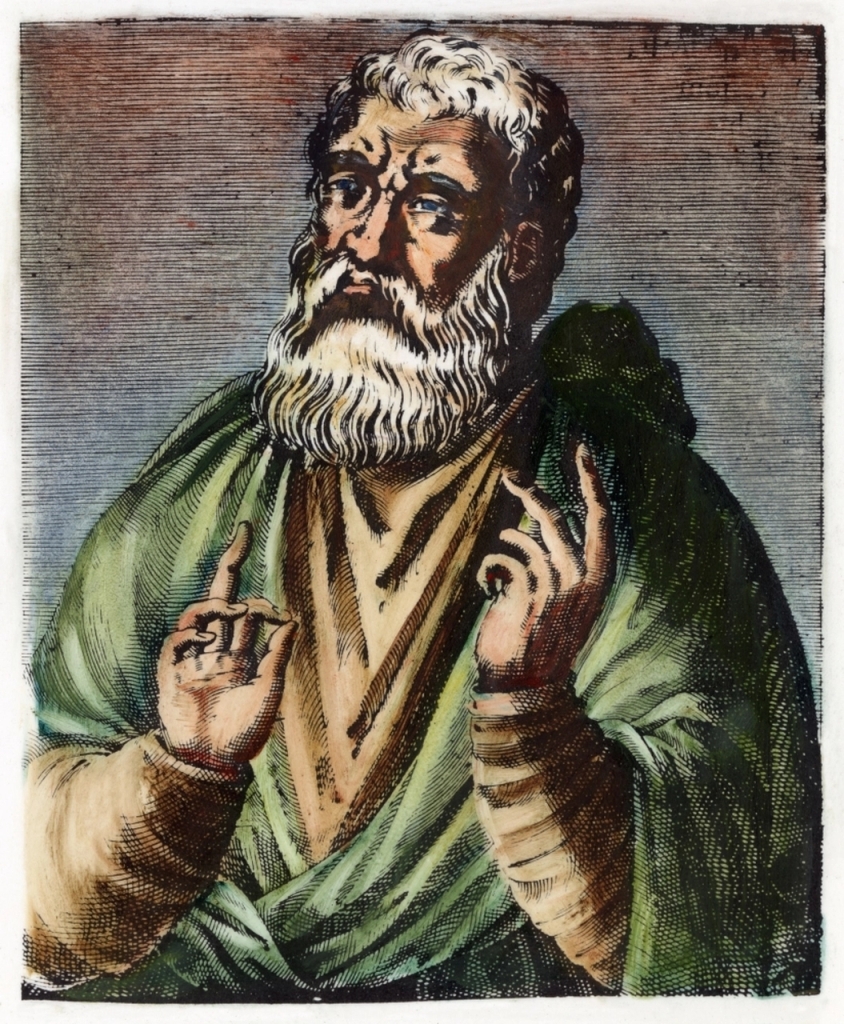Whither Hence?
Posted by turmarion
In the previous post in this series, I discussed some essays I’d come across dealing with the subject. So far, nothing that I’ve read by those defending the idea of a more or less literal Adam and Eve has made me rethink the basic thesis of this series–that is, that Christian theology must be significantly revised in light of what we know of human origins based on modern science. If anything, they’ve confirmed me in the belief that the standard theology simply is inadequate. I don’t claim to have a final answer as to the nature of sin, Original or otherwise, the Atonement, and how it all works. I don’t think anyone else has a tenable answer either as yet. I do have faith in Christ as Redeemer and Savior of mankind; this rethinking hasn’t led me to abandon Christian faith. It just means that I no longer adhere to any specific theory of how Jesus saves–just that he does so.
The most significant defect in many of the authors I’ve read over the course of writing this series is a dogged insistence on adherence to dogma–be it the Bible or Papal documents–above all else. It’s like the famous saying by St. Ignatius Loyola (one of the most ignominious and least respectable points of one of my favorite saints), “That we may be altogether of the same mind and in conformity with the Church herself, if she shall have defined anything to be black which to our eyes appears to be white, we ought in like manner to pronounce it to be black.” This is the exact attitude that led to increasingly complex and desperate attempts to preserve the geocentric model of the cosmos as more and more information made it appear steadily more untenable, and ultimately to the sentencing of Galileo to house imprisonment for life. When I read authors such as Feser parse Papal documents down to the nth degree (or his Protestant counterparts do the same for the Bible), it drives me nuts. They are basically saying, “Well, as long as I can interpret Encyclical X in such a way and making enough intellectual contortions as to indicate that white isn’t necessarily in so many words to be held as being black, then it’s probably OK to call it white.” As if I need Papal (or Biblical) permission to say that white is white!
At least I can respect the late Pope John Paul II’s acknowledgement that there is indeed a problem here for traditional theology and the Church at large for keeping its mouth shut. Really, it needs to do a lot more in terms of bringing the issue up front and center, and revising the theology; but I suspect that there are a lot of recalcitrant prelates who’d be unwilling to open the door to polygenism and re-thinking Original Sin and the Fall. Thus, better for the Church to stay silent than to shoot itself in the foot again à la the Galileo debacle.
I think the best approach to the whole thing is exemplified by Einstein (stay with me here!). For decades, the idea of the luminiferous ether–the invisible, intangible, and generally undetectable medium through which light supposedly moved–was regnant. When Michelson and Morley’s famous (and clever) experiment failed to find evidence of the ether, the physics world was thrown into turmoil, with ever more complex, more elaborate, and more ad hoc theories being proposed to save the idea of the ether. Finally, the young patent clerk Albert Einstein took the obvious but at the time startling step of cutting the Gordian knot and saying, “There is no ether.” Simple as that; and from there, everything fell into place with his Theories of Relativity.
This is why I respect Peter Enns, whom I discussed last time. He has pretty much done in theology what Einstein did in physics. Rather than going to heroic lengths to save a more or less literal version of Genesis and the origin of mankind, he pretty much says, “Look, that’s the wrong way to look at it. This is not what Genesis meant, and Paul was using the tools he had to discuss the Atonement. Thus, let’s just toss out the traditional view of Adam and Eve as the First Parents whose Fall condemns us all, and look at it from a different angle.” In short, he tosses out the ether of an untenable theology rather than doing mental gymnastics to save it. If I read him correctly, he does not (at least not in this book) come up with an overarching theory to replace the old one, though he does seem to point out some possible avenues. Still, the first step of coming up with a new system–in theology or anywhere else–is often having the courage and integrity to jettison the old one.
This is where I’m moving. It seems almost certain that a view of a discrete, specific moment of Original Sin, passed down to future humans, whether by a Primal Couple or a Primal Group, is incorrect. In effect, there was no Eden. Better, perhaps, Eden might be a metaphysical reality–the world as God intended it to be–but never a historic one actually instantiated in the cosmos that actually exists. This leans me a bit more towards Evagrian theology, but at this point I don’t claim to have a systematic view as to the exact nature of the Fall, sin, and Atonement. These are still issues on which I need to think. I’ll probably be posting on this topic a little more frequently than I have been; but it’s still going to be a long haul, and I’m beginning to see “Legends of the Fall” as much more open-ended than I’d previously thought. In any case, we’ll see where it all leads!
Part of the series Legends of the Fall.
Posted on 05/02/2013, in Catholicism, Christianity, metaphysics, philosophy, religion, theology and tagged blogging, Catholicism, Christianity, Legends of the Fall, philosophy, the Fall of Man, theology. Bookmark the permalink. 3 Comments.
Leave a comment Cancel reply
This site uses Akismet to reduce spam. Learn how your comment data is processed.












Pingback: Legends of the Fall: Index « The Chequer-board of Nights and Days
Pingback: Some Postulates « The Chequer-board of Nights and Days
Pingback: Please Help Me, I’m Falling | The Chequer-board of Nights and Days